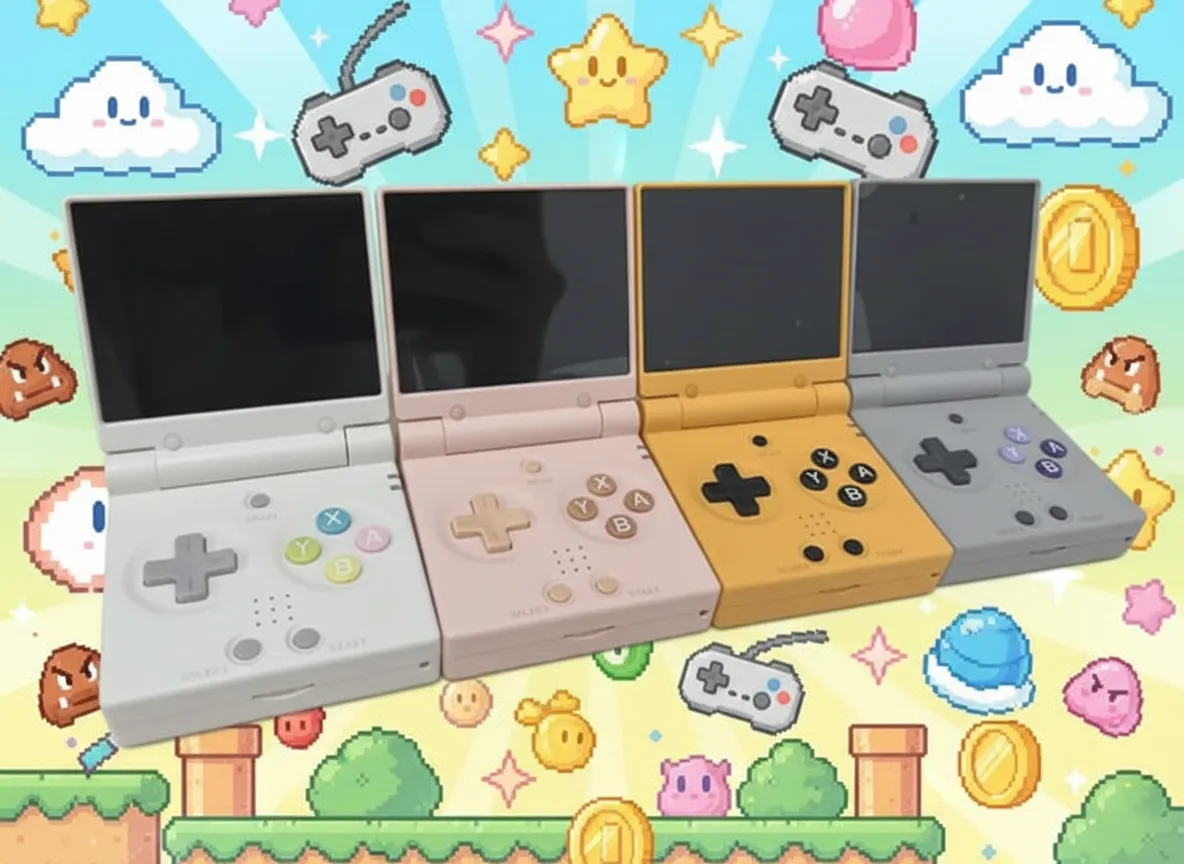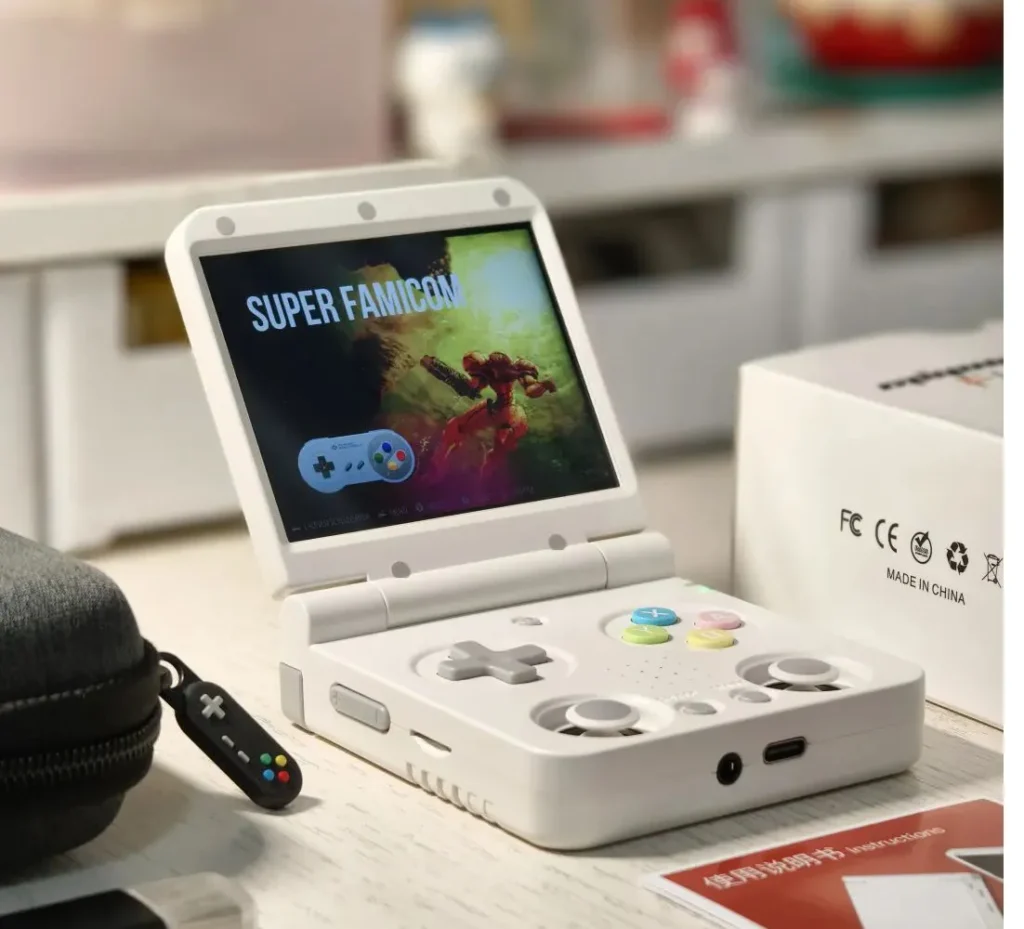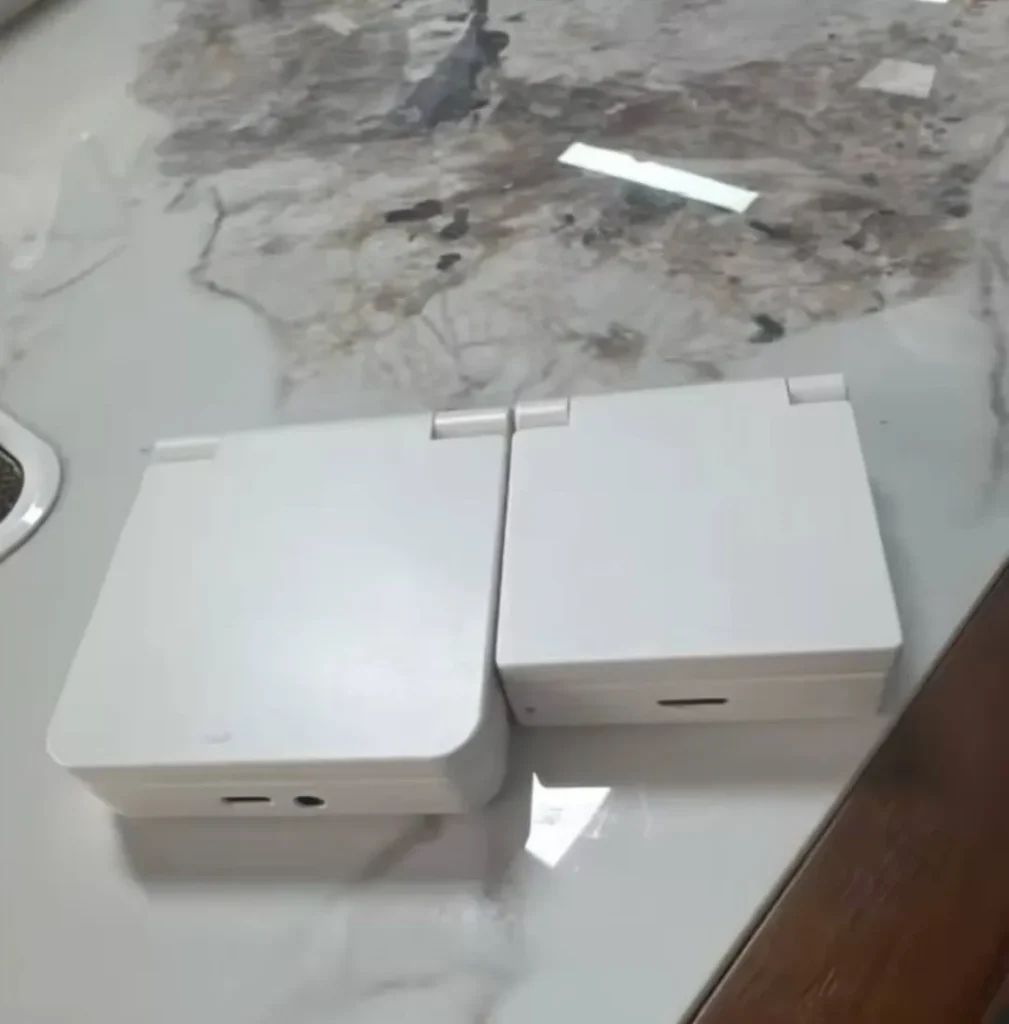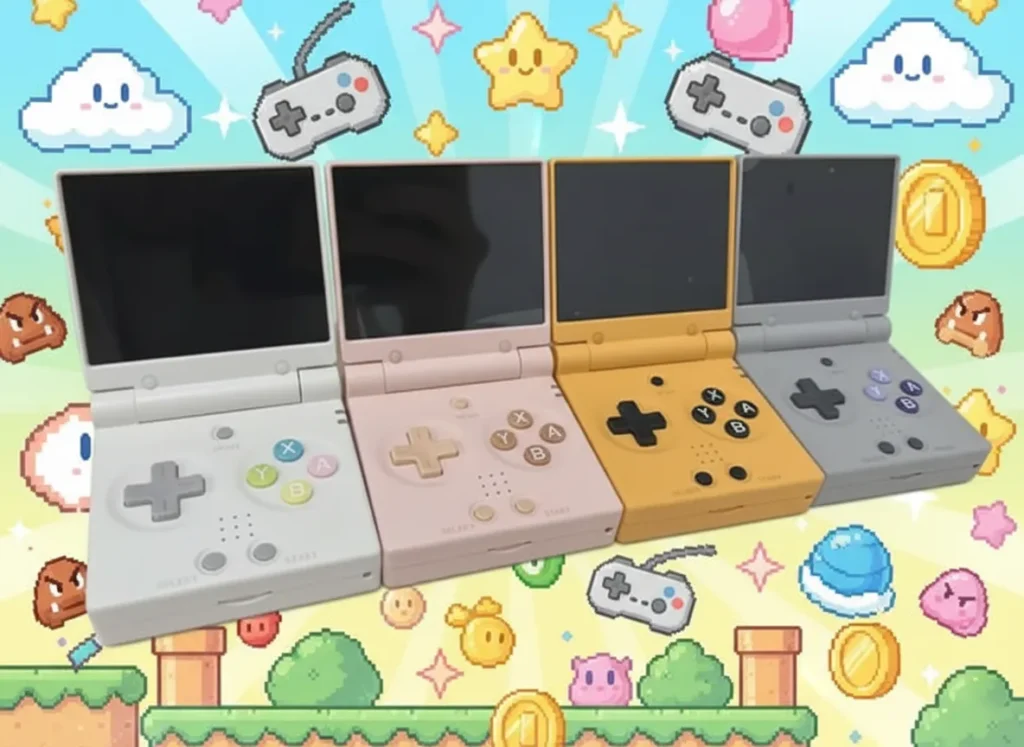Kontakt Boss
Beeilen Sie sich nicht, es abzuschließen, sprechen Sie direkt mit unserem Chef, Sie werden eine Überraschung erleben.



1900+ Benutzer
Abgeschlossene Benutzerdienste

Miyoo has unveiled a new handheld game console that’s smaller, cuter, and more “toy-like”: the Miyoo Mini Flip.
The Miyoo Mini Flip has been leaked, but without the dual joysticks, its body and screen are even smaller than the Miyoo Flip, making it even more compact and portable. The screen’s bezels are incredibly narrow, giving it a very high screen-to-body ratio.

The clamshell design is compact and easy to carry, protecting the screen. When closed, it measures approximately 4.25 x 3.1 x 0.88 inches, making it stylish and travel-friendly.

The top half houses a 3.5-inch IPS screen with a 640×480 resolution, perfect for retro gaming.
The lower half houses a series of controls: a directional pad, ABXY buttons, dual analog sticks, a Start/Select button, and additional triggers. This layout ensures compatibility with a wide variety of games while maintaining a comfortable user experience.
Miyoo Mini Flip is positioned as a retro game. The retro game platforms it can simulate are mainly below the PSP, which basically do not require a joystick. Therefore, removing the joystick in exchange for a smaller body size is a good choice.

Leaks reveal that the Miyoo Mini Flip will be available in four colors: white (with pastel-colored buttons), SNES gray, pink, and yellow.
This color scheme is incredibly targeted: white with soft keys creates a clean, crisp look, SNES gray evokes a retro gaming vibe, and pink and yellow clearly appeal to trendy gamers and female gamers. Miyoo’s color palette perfectly captures both retro nostalgia and a cute, vibrant vibe.
Some people may worry that pink/yellow are too soft and will affect the purchasing intention of “hardcore players”, but there are many die-hard fans among old players who like cute colors – the key is that the manufacturer has given the choice to the market this time, rather than tying everyone to the same color scheme.
According to leaks, the Mini Flip likely shares the same hardware architecture as the Miyoo Mini V4: a 1.2GHz ARM Cortex-A7 dual-core SoC, 128MB of RAM, and a 750×560 IPS screen. This means it’s not simply a performance upgrade followed by a foldable design, but rather a portable, clamshell version of the familiar Mini experience.
This has both advantages and disadvantages: the advantage is that the community has already created a large number of front-ends (such as Onion and MinUI) and firmware support for V4, and the user entry threshold is low; the disadvantage is that this old architecture will still have performance bottlenecks when facing higher-load simulators or custom systems.
As for other configurations, to put it simply, Miyoo Mini Flip = Miyoo Mini V4 hardware + FunKey SP flip design.
Processor? Same as the Mini V4.
OS? Onion compatible (meaning you can still play to your heart’s content).
Features? It even has Wi-Fi, allowing you to sync content online like the Mini Plus.
Other rumored specifications include:
RAM: 128MB.
Battery: 3000mAh for extended gaming sessions.
Connectivity: Wi-Fi support (Bluetooth is reportedly absent).
Ports: Dual USB-C ports, a 3.5mm headphone jack, and a mini HDMI port.
Storage: Dual microSD card slots for expandable memory.
Note that the Miyoo Mini Flip is not a “shrunken Mini Plus,” but more like a dream-like remake of the Game Boy SP you secretly played under the covers as a child.
The “Mini” in its name has obvious advantages: Compared to the larger Miyoo Flip, the Mini Flip feels more like a handheld game console that slips easily into your pocket. Its folding structure also protects the screen and buttons, making it portable and easy to carry.
If it really retains the screen quality of the Mini V4 (750×560 IPS, narrow bezel), it will find a better balance between visual experience and portability.
The question is: would you whip it out on the subway and play for two hours, or would you prefer your phone?
Some veteran gamers use it as a “supplementary device”—keeping one at home as a collection and carrying one on the go to satisfy cravings. This type of usage, more than simply looking at specs, will determine its market success.
The good news is that if the hardware is really from the same lineage as V4, then the community front-end Onion and MinUI, are likely to be used out of the box. This is also a major attraction of the Miyoo series: a strong community = faster adaptation, richer themes, and plug-ins.
On the other hand, once the device adopts the new “folding” form, the button layout and system interaction may bring adaptation workload – especially when developers have to deal with screen rotation, button mapping, and power saving strategies in the clamshell state.
Wenn Sie gerne an Firmware herumbasteln und Themes erstellen, bieten Ihnen diese Hardware-Iterationen eine echte Gelegenheit, Ihren Spaß zu steigern. Wenn Sie es einfach nur „herausholen und damit spielen“ möchten, müssen Sie auf die erste Welle stabiler Firmware warten. Was ist Ihnen lieber: „Spielen, sobald die Community beitritt“ oder „offizielle Optimierung vor der Veröffentlichung“?
Als der Mini Flip auf den Markt kam, war die Konkurrenz noch größer als bei der Veröffentlichung des ursprünglichen Mini:
Die Vorteile von Miyoo liegen in seiner „kleinen, aber feinen“ Natur und seiner „Community-Kultur“, während die Vorteile der Konkurrenz in ihren vielfältigeren Produktlinien und oft stärkeren Lieferketten liegen.
Die Kernfrage lautet: Kann „bekannte Hardware + starke Community“ die neue Produktoffensive der Konkurrenz in puncto Preis und Funktion übertreffen?
Ich vermute, dass Miyoo eine treue Anhängerschaft behalten wird, wenn die Preise angemessen sind und das Unternehmen weiterhin Open Source-freundlich bleibt. Ist der Preis jedoch zu hoch oder die Verfügbarkeit gering, werden viele unentschlossene Nutzer zu Anbernic oder PowKiddy greifen. Werden Sie aus Nostalgie kaufen oder für mehr Leistung/einen größeren Bildschirm die Marke wechseln?
Miyoo Mini Flip ist nicht nur eine „faltbare Version von Mini“, sondern ein Produkt, das den Markt testet – mit vertrauter Hardware, niedlichen kleinen Farben und einem Community-gesteuerten Ökosystem, um eine Benutzergruppe zu gewinnen, die mehr Wert auf Portabilität und trendiges Spielen legt.
Wenn Sie bereits von der weißen oder SNES-grauen Farbgebung angetan sind, sollten Sie sich eines der ersten Modelle zulegen. Wenn Ihnen Leistung oder ein größerer Einsatzbereich wichtiger sind, sollten Sie lieber abwarten und sich ausführlichere Spezifikationen und Preise ansehen. Unabhängig davon ist die Retro-Handheld-Spielkonsole In der Szene herrscht reger Betriebsamkeit und das ist ein Grund zum Feiern.
Werfen wir nun einen Blick in die Kommentare: Welche Farbe werdet ihr wählen? Bestellt ihr die erste Version oder wartet ihr auf Testberichte? Ist euch Community-Support wichtiger als Hardware-Upgrades?